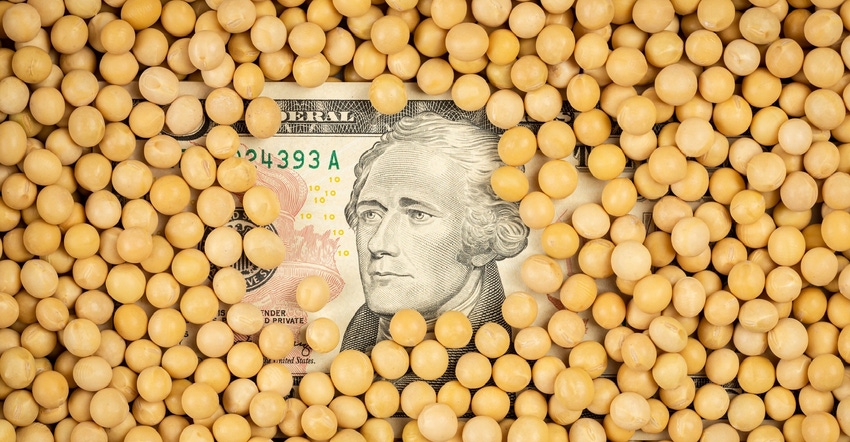
Sometimes it seems like the theme of this crop marketing year for soybeans has been, and continues to be, “Hurry up and wait.”
Looking back since January of this year, there have been a few times that the November 2022 soybean prices marked time and entered into a price consolidation phase. Without fresh news, soybean prices paced back and forth in trading ranges, waiting for that next piece of fundamental information to justify a price breakout move either higher or lower.
So far, those price consolidation patterns have led to higher prices.
And now here we sit again, for nearly one month, November 2022 soybean futures have been meandering back and forth in an approximate 70-cent trading range waiting for fresh news. Based on technical chart formations, the next potential breakout move for soybeans looks to be either $1.50 higher or $1.50 lower. Which direction depends on if the upcoming market information received is perceived as bullish or bearish to the market.
Thankfully, that fresh news will be available soon as we are waiting for two pieces of crucial information: the June 30 acreage report, and weather.
June 30 acreage report
On the prospective planting report in late March, the USDA suggested 91 million acres of soybeans would be planted in the United States this spring. Up from 87.2 million acres the year prior. With domestic and global demand strong, there is a true need for that additional acre increase.
Trade will be quite curious to know what the acreage number will say on the June 30 report, especially with the entire U.S. soybean crop not yet planted due to a soggy spring in North Dakota and Minnesota. As of this week’s crop progress report, only 88 percent of the U.S. soybean crop has been planted.
North Dakota is still struggling and is suffering the slowest planting pace on record and still has 1.75 million acres left to plant. In Minnesota, there are still 960,000 acres to plant. Combined that equates to 2.71 million acres not planted, and will they get planted?
Prior to this soggy spring, some were suggesting that due to high chemical and fertilizer costs, soybean acres could be even larger than the 91 million acres suggested by USDA in March. The bottom line? We don’t have a clue at this moment what that acreage number will be.
Even so, here are a few scenarios of what ending stocks would look like based on different acreage possibilities.
Using the demand numbers, yield and carry-in numbers suggested on the June 10 WASDE report, if planted acres are kept at 91 million acres, then ending stocks are pegged at 280 million bushels. If soybean acres come in smaller, at 90 million acres, then ending stocks would be pegged at 229 million bushels. Should acreage increase, up to 92 million acres, then ending stocks would come in at 332 million bushels.
Remember, the futures markets trade on perception. And if the perception is that ending stocks are getting larger, then prices will likely fall lower. If the perception is that ending stocks are getting smaller, then futures prices will likely rally higher.
Mother nature
Ultimately, weather has the final say. A hot and dry late July and August could zap record yield potential. Or an ill-timed hurricane could hit the Southern Gulf shores and shut down exports or slow harvest. Or, what if August weather is perfect, temperatures and sunshine timed with the right amount of rain at just the right time leading to record yields?
Be ready for anything that could affect the price of soybeans either higher or lower.
It seems as though a sense of complacency has hit the producer mindset, and that marketing has been placed on the back burner, because “surely prices will stay high.”
With the extreme global geopolitical drama happening around the world, and the notion that inflation needs to be curbed quickly, there are outside market influences that could come in and become front and center stage to the soybean market.
Reach Naomi Blohm at 800-334-9779, on Twitter: @naomiblohm, and at [email protected].
Disclaimer: The data contained herein is believed to be drawn from reliable sources but cannot be guaranteed. Individuals acting on this information are responsible for their own actions. Commodity trading may not be suitable for all recipients of this report. Futures and options trading involve significant risk of loss and may not be suitable for everyone. Therefore, carefully consider whether such trading is suitable for you in light of your financial condition. No representation is being made that scenario planning, strategy or discipline will guarantee success or profits. Any decisions you may make to buy, sell or hold a futures or options position on such research are entirely your own and not in any way deemed to be endorsed by or attributed to Total Farm Marketing. Total Farm Marketing and TFM refer to Stewart-Peterson Group Inc., Stewart-Peterson Inc., and SP Risk Services LLC. Stewart-Peterson Group Inc. is registered with the Commodity Futures Trading Commission (CFTC) as an introducing broker and is a member of National Futures Association. SP Risk Services, LLC is an insurance agency and an equal opportunity provider. Stewart-Peterson Inc. is a publishing company. A customer may have relationships with all three companies. SP Risk Services LLC and Stewart-Peterson Inc. are wholly owned by Stewart-Peterson Group Inc. unless otherwise noted, services referenced are services of Stewart-Peterson Group Inc. Presented for solicitation.
The opinions of the author are not necessarily those of Farm Futures or Farm Progress.
About the Author(s)
You May Also Like






